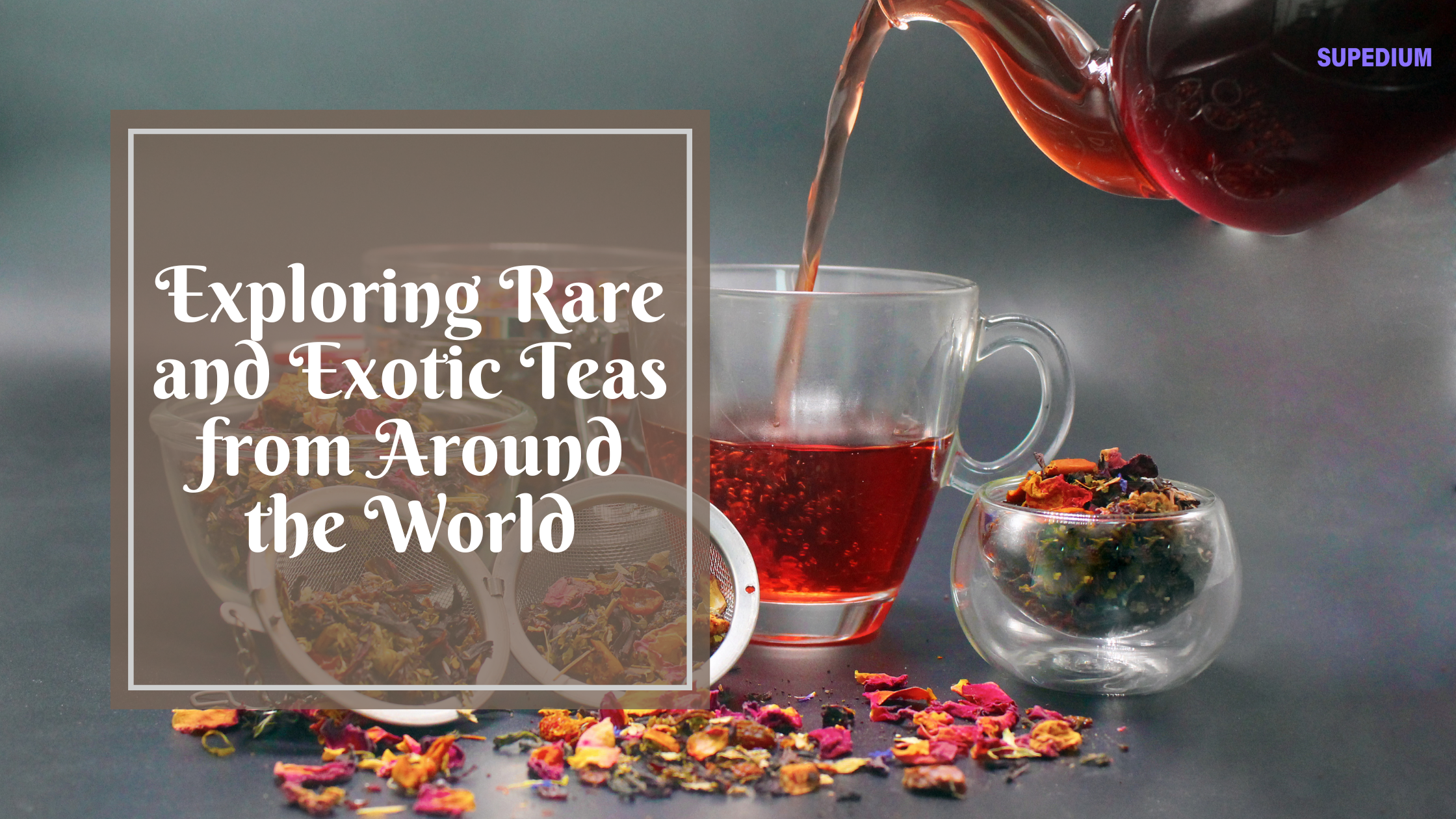Table of Contents
![]()
Introduction
Tea, a beloved beverage enjoyed globally, varies widely in type, flavor, and cultural significance. Among the countless varieties, rare and exotic teas stand out for their unique qualities and the stories they tell. Exploring these teas offers a window into the rich tapestry of global tea culture and provides a deeper appreciation of the beverage’s diversity.
Historical Context
The journey of tea began in ancient China, where it evolved from a simple herbal infusion into a cultural staple. Over centuries, tea traveled across continents, integrating into various cultures and practices. Rare teas often have historical roots that link them to traditional practices, elite circles, or specific regional histories. Understanding these historical contexts enriches the appreciation of their rarity and value.
Regional Exploration
- Asia
- Japan: Japanese teas like Matcha and Gyokuro are renowned for their unique cultivation and preparation methods. Matcha, a powdered green tea, is integral to the Japanese tea ceremony, symbolizing mindfulness and harmony. Gyokuro, known for its sweet, delicate flavor, is shaded before harvest to enhance its umami qualities.
- China: China’s tea heritage includes exceptional varieties like Da Hong Pao and Pu-erh. Da Hong Pao, a prized oolong, boasts a rich, complex flavor and a storied past linked to Ming Dynasty royalty. Pu-erh tea, a fermented tea from Yunnan province, is aged and valued for its deep, earthy taste and purported health benefits.
- India: Assam Gold and Nilgiri teas highlight India’s diverse tea landscape. Assam Gold, a rare black tea with a malty, robust flavor, is cultivated in the Assam region. Nilgiri tea, from the Blue Mountains of South India, is known for its fragrant, brisk character and is less commonly found outside India.
- Africa
- Kenya: Kenya’s Purple Tea is a novel variety known for its antioxidant-rich purple leaves and distinct berry-like flavor. This tea, developed relatively recently, represents a significant innovation in tea cultivation.
- South Africa: Rooibos, a caffeine-free herbal tea from the Western Cape, is celebrated for its naturally sweet and nutty flavor. Its unique growing conditions and health benefits have contributed to its growing popularity worldwide.
- South America
- Peru: Yerba Mate, a traditional South American infusion, is noted for its strong, earthy flavor and stimulating properties. It’s central to social interactions in countries like Argentina and Paraguay.
- Argentina: Mate, often consumed in a shared gourd, plays a significant role in Argentine culture. Its preparation and consumption are steeped in ritual and communal bonding.
Cultivation and Production
The cultivation of rare teas often requires specific conditions. For instance, Gyokuro is grown under shade to enhance its flavor profile, while Pu-erh involves a unique fermentation process that develops its complex taste over time. Traditional harvesting methods, such as hand-picking delicate tea leaves, further contribute to the rarity and quality of these teas.
Tasting and Preparation
Preparing rare teas can be an intricate process. Matcha requires precise whisking to achieve its frothy consistency, while Pu-erh may be steeped multiple times to unlock its full depth of flavor. Understanding the nuances of each tea’s preparation helps in appreciating its distinct taste and aroma.
Cultural Significance
Tea ceremonies and rituals often highlight the cultural importance of rare teas. In Japan, the tea ceremony is a meditative practice that emphasizes harmony and respect. In Argentina, sharing mate is a social ritual that fosters connection and conversation. These practices reflect the deep-rooted cultural values associated with tea.
Health Benefits
Rare teas offer various health benefits. For example, Pu-erh tea is thought to aid digestion and promote weight loss, while Rooibos is rich in antioxidants and free from caffeine. Comparing these benefits to more common teas provides insight into the unique properties of each variety.
Conservation and Sustainability
Efforts to preserve rare tea species and promote sustainable practices are crucial. Many rare teas are grown in limited regions and face threats from climate change and overharvesting. Sustainable cultivation practices and conservation initiatives are essential for ensuring the longevity of these exceptional teas.
Conclusion
Exploring rare and exotic teas reveals a world of diversity and tradition. Each tea, with its unique history and cultural significance, offers a distinct experience for enthusiasts. Delving into these rare varieties not only enhances our understanding of tea but also encourages us to appreciate the ultimate nuances of this beloved beverage.
Share This





Be the first to comment